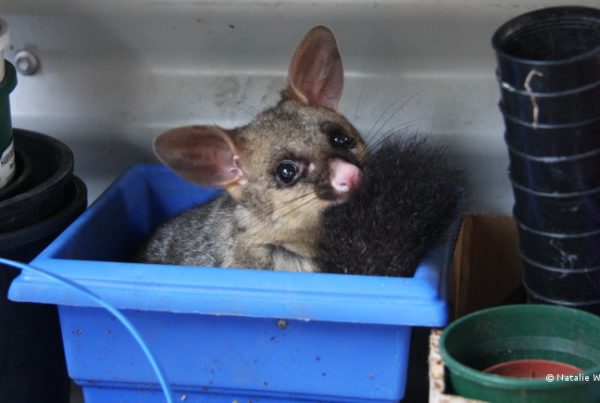Native plants bring colour and wildlife to banish winter woes.
Winter’s big chill doesn’t mean the garden has to be drab and lifeless. Some of our fabulous natives work their magic at this time of year. They also work their magic on nectar-eating birds that flock to their flowers, so you’ll be bringing life into your garden.
Planting bird-attracting plants makes a positive contribution to the environment. A single garden might seem only a small part of the overall environment, but it can affect the neighbourhood. The birds, animals and insects it attracts find their way into other gardens.
Which flowers appeal to birds and gardeners during the cool months? One of my favourites, grevilleas, are popular with nectar-eating birds. More than 250 species are found growing naturally from sea level to mountainous regions. There are numerous cultivars.
Grevilleas love a sunny position, free-draining soil and a light prune after flowering to keep them bushy and encourage flowers for the following winter. They can be used as screening plants, feature shrubs or groundcovers. Low-growing grevilleas can be grown in pots.
Banksias are also a hit with birds and there is a great selection. Two hardy winter flowering varieties for sunny spots are the heath banksia (Banksia ericifolia) and the coast banksia (B. integrifolia). The stunning orange-red flower spikes of the heath banksia appear among needle-like leaves. It grows equally well in cold climates and near the sea.
The coastal banksia is just as versatile and is commonly used for beach reclamation and erosion control. It forms a medium-sized tree with pale yellow flowers and its green leaves have a silvery underside. There is also a prostrate cultivar for cascading down banks.
Two small banksias that work well in large pots are ‘Cherry Candles’, with large deep cherry and golden candles, and ‘Tucker Time Birthday Candles’, whose golden-orange flowers start appearing in late summer. Feed banksias and grevilleas with a low-phosphorous native plant food.
Little honey-eating birds love native fuchsias (Correa). White correa (Correa alba) has white, star-like flowers and grey-green leaves. It makes a good small shrub.
There are some great Correa cultivars, including ‘Pink Frost’, whose tubular rose-pink flowers appear from autumn until spring. This low-growing (40-centimetre-high) plant loves semi-shade and can be grown in pots.
Correa ‘Dusky Bells’ works its magic in large pots and likes full sun or semi-shade. Its reddish-pink bells appear among dark green foliage. Clip it regularly to ensure a bushy habit and more flowers.
Depending on the cultivar, you can choose purple-, white- or pink-flowering climbing hardenbergia. This evergreen climber is great for metal fences and also can be grown as a groundcover.
Sow seeds of native everlasting daisies this month in sunny beds and well-drained soil. Check out Yates everlasting daisy ‘Mixed Hybrids’ seed, a blend of red, white and pink semi-double flowers.
- Check out more native plants at austraflora.com. The website also has a store locator that makes it easy to find its plants. You can buy plants online from nativesplus.com.au and koalanativeplants.com.au. For more information on native plants, see anpsa.org.au.
- Bring some colour indoors. Florist’s cyclamens are available in nurseries with blooms in red, white, salmon, mauve and purple. Avoid over-watering and these will flower for many weeks in a well-lit position.
Story by Cheryl Maddocks; Story Source: www.domain.com.au
House prices are on the rise. Find out the value of your property now.
Get a free online property report from Hicks Real Estate. It takes seconds.






